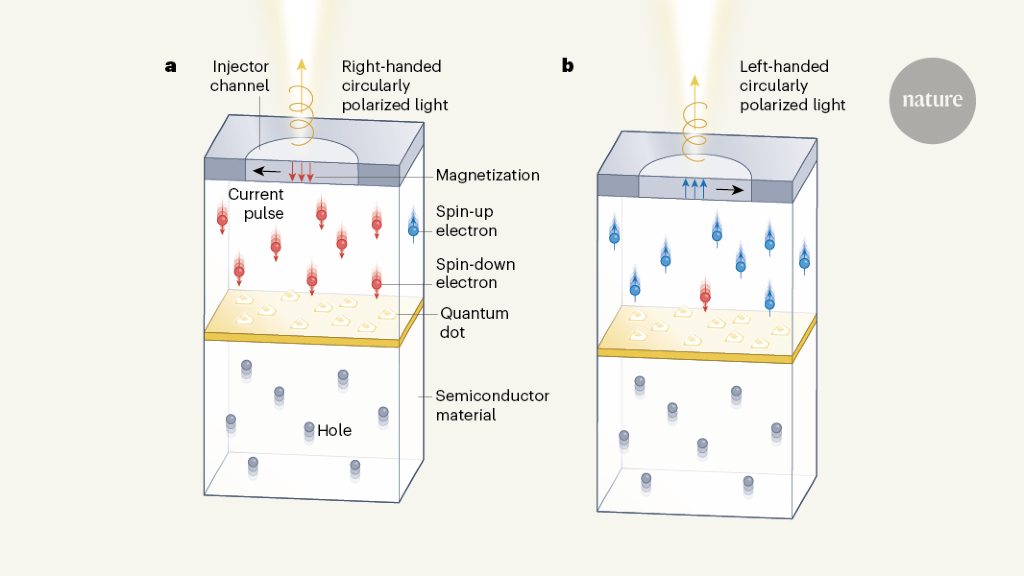Impact of Spintronics and Photonics on Information Technologies
מושגי ליבה
Efficient information technologies integrate electronics, spintronics, and photonics through manipulating light with electrically controlled magnetization.
תקציר
Advances in information technology lead to increased power consumption for data storage, processing, and transmission. Spintronics encodes information in electrons' spin, while photonics optimizes the transmission of this spin-encoded information efficiently with light. Dainone et al. have demonstrated the manipulation of light by controlling material magnetization, enabling seamless integration of electronics, spintronics, and photonics for efficient information technologies.
Electrons flip a switch on optical communications
סטטיסטיקה
Advances in information technology lead to increased power consumption for data storage, processing, and transmission.
Spintronics encodes information in electrons' spin.
Photonics optimizes the transmission of spin-encoded information efficiently with light.
Dainone et al. have manipulated light by controlling material magnetization.
ציטוטים
"Efficient information technologies integrate electronics, spintronics, and photonics through manipulating light with electrically controlled magnetization."
תובנות מפתח מזוקקות מ:
by Satoshi Hiur... ב- www.nature.com 03-27-2024
https://www.nature.com/articles/d41586-024-00663-y
שאלות מעמיקות
How can the integration of spintronics and photonics revolutionize information technologies
The integration of spintronics and photonics has the potential to revolutionize information technologies by enabling more efficient data storage, processing, and transmission. Spintronics allows information to be encoded in electrons' spin, in addition to their charge, leading to faster and more energy-efficient computing. By combining this with photonics, which involves the manipulation of light for communication purposes, data can be transmitted at high speeds with minimal energy consumption. This integration opens up possibilities for developing faster and more powerful electronic devices that can handle the increasing demands of modern technology.
What are the potential drawbacks or limitations of seamlessly integrating electronics, spintronics, and photonics
While the seamless integration of electronics, spintronics, and photonics offers numerous benefits, there are also potential drawbacks and limitations to consider. One challenge is the complexity of combining these different technologies, which may require specialized materials and manufacturing processes. Additionally, ensuring compatibility and efficiency between spintronics and photonics components can be a technical hurdle. Moreover, the development of reliable and scalable devices that incorporate all three technologies may pose challenges in terms of cost and practical implementation. Addressing these limitations will be crucial for realizing the full potential of integrated spintronics and photonics in information technologies.
How can advancements in spintronics and photonics impact other scientific fields beyond information technologies
Advancements in spintronics and photonics have the potential to impact other scientific fields beyond information technologies. In the field of quantum computing, for example, spintronics can play a crucial role in developing qubits for quantum information processing. By harnessing the unique properties of electron spin, researchers can explore new possibilities for quantum computing systems. Photonics, on the other hand, can be applied in various fields such as sensing, imaging, and medical diagnostics. The integration of spintronics and photonics can lead to innovations in these areas, offering new opportunities for scientific research and technological advancements.
0
